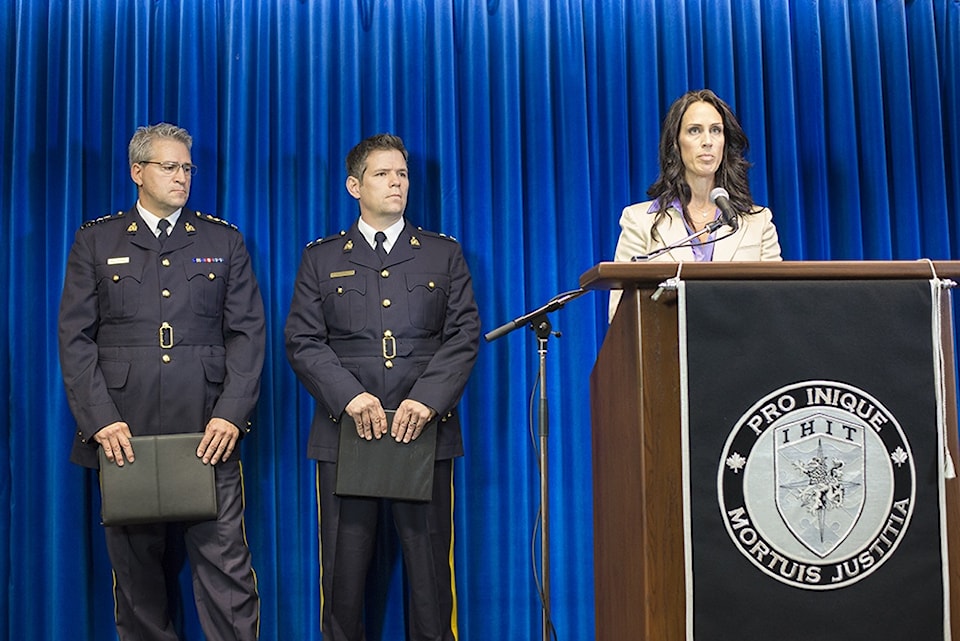It was last Monday, just before deadline, when my editor asked me to join the rest of the Lower Mainland media gathered in the press room at the Surrey RCMP’s Green Timbers headquarters. We were about to learn more about the man arrested in connection with the murder of 17-year-old Serena Vermeersch, who had vanished while walking home a week earlier before her body turned up near the railway tracks in East Newton.
As I arrived, we were told that the Surrey RCMP and Integrated Homicide Investigation Team were delaying the press conference by an hour in order to ascertain whether they could announce the name of the alleged murderer. Due to some confusion, the RCMP were under the impression there was a publication ban imposed by the courts on using the name of the man in custody.
While waiting for this hour to pass, myself and several other members of the media soon learned the identity of the charged, one Ramond Lee Caissie. A quick Google search on the iPhone revealed not only a disturbing history of violent crime, but a notice sent out from the Ministry of Justice in June of 2013 warning the public about his release into Surrey.
When the press conference did get underway, everybody in the room had but a single unspoken question: How could this have happened?
To the great surprise of this reporter, rather than answer questions about the crime or the accused, the police spent a good deal of the press conference patting one another on the back for having caught the alleged killer so quickly.
And when it came time to answer questions, the police used the publication ban as a means of refusing to comment. This refusal to comment has more or less persisted to this day, except in the case of IHIT’s Jennifer Pound, who complained to CKNW about the media “dramatizing†the situation and inputting information “that is not factual.â€
The BC RCMP went one step further, issuing a press release last Thursday to “set the record straight†and deny police lied about the publication ban. In other words, don’t blame us, we’re just doing our jobs.
Look, I can understand the point of view of the police. From their perspective, they caught a dangerous offender very quickly, and removed the alleged murderer from the streets of Surrey. I can imagine the many high-fives and back-patting that must have gone on behind closed doors.
But here in the real world, citizens were looking for more answers than the announcement they caught the alleged bad guy. They wanted to know how the suspected bad guy was given the chance to commit a crime in the first place.
After all, Raymond Lee Caissie was a veritable billboard announcing his likelihood to reoffend. Documents obtained from the National Parole Board in January 2013 indicate Caissie posed a “moderate to high risk for both general and sexually violent recidivism.â€
When the media asked police why this individual wasn’t being watched by a surveillance team 24 hours a day, it’s because it’s the same question every resident of Surrey asked themselves the moment they found out a dangerous offender had been released. Followed by the next question: Why was this person ever released from prison in the first place?
The men and women in uniform who helped take this dangerous offender off our streets should be commended. But we, the media, have an obligation to ask tough questions – questions going through the minds of every Surrey resident.
Do not blame us for doing our jobs.
Adrian MacNair is a staff reporter for the Now.
